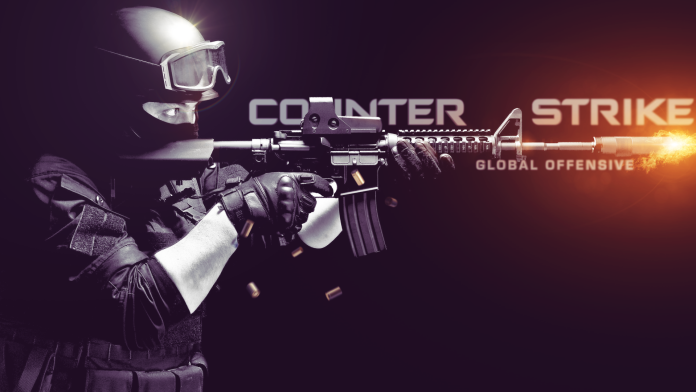Imagine stepping into the world of online games, where something incredibly exciting is happening – the CS:GO skin trading is experiencing a significant surge in popularity. But what exactly is it all about? Well, it’s not just about playing the game itself; it’s about acquiring these visually appealing virtual items and engaging in exchanges with other players. In this article, we will explore this gaming phenomenon, seeking to demystify what CS:GO trading entails, exploring whether it can indeed boost your in-game wealth, and unraveling the compelling reasons behind its magnetic pull for players of all backgrounds.
What is Trading in CS:GO?
Trading in CS:GO is a practice where players exchange in-game items, primarily skins, stickers, and other collectibles. CS:GO players trade for various reasons, including personal customization, showcasing unique designs, and even potential profit. There are two primary types of trading: casual trading among friends or acquaintances and trading through online platforms and marketplaces. In these transactions, people typically exchange weapon skins, knife skins, and occasionally stickers and graffiti. The methods of trading include direct in-game trades, which can be riskier due to potential scams, and trading through trusted online marketplaces like the Steam Community Market or third-party trading sites, which provide a safer and more regulated environment. The choice between these methods largely depends on individual preferences and the level of trust established within the trading community. Both methods have their merits, but reputable online marketplaces are generally considered safer for transactions involving valuable items.
Is Trading CS:GO Skins Profitable?
The trading of CS:GO skins can be profitable, but it’s important to clarify what we mean by profitability. Profitability in this context refers to the potential for players to earn more in-game currency or real-world money than they initially invested in their skins. To increase profitability, players should stay informed about market trends, monitor skin values, and look for opportunities to buy low and sell high. However, it’s crucial to stress the importance of caution. The CS:GO skin trading landscape can be risky, with scams and fraudulent schemes lurking. Players must exercise diligence, only trade with trusted individuals or reputable online platforms, and never rush into transactions. While profit is attainable, it’s not guaranteed, and maintaining a cautious approach is paramount to protect one’s assets and reputation in the trading community.
Factors Driving the Popularity of CS:GO Skin Trading
As you might expect, CS:GO skin trading is a widely popular practice among players. To understand why, let’s delve into the factors that drive its popularity, examining each one in-depth:
In-game economy and rarity of skins
The in-game economy and the rarity of skins in CS:GO are fundamental factors driving the popularity of skin trading. CS:GO’s economy is a unique ecosystem where skins, despite being purely cosmetic, hold real-world value due to their scarcity and visual appeal. This rarity is a result of the different rarity levels assigned to skins, with some being exceedingly rare, making them highly coveted by players. This rarity and demand create a thriving trading environment where players are constantly seeking to acquire these exclusive items. The allure of owning and trading these rare skins adds an extra layer of excitement to the game, turning it into a virtual treasure hunt. This synergy between the in-game economy and skin rarity not only fuels the desire for collecting unique items but also motivates players to engage in trading to enhance their virtual inventory.
eSports and Professional CS:GO scene
The explosive growth of eSports and the professional CS:GO scene has significantly bolstered the popularity of skin trading. As CS:GO tournaments and competitions gained prominence, they attracted a massive global audience. Many fans started supporting their favorite teams and players by purchasing team-branded skins or skins with player autographs, adding a new dimension to skin trading. These specialized skins, often released during major tournaments, become valuable memorabilia, and their limited availability amplifies their appeal. The eSports connection creates a symbiotic relationship between competitive gaming and skin trading, driving both industries forward. Fans feel more connected to the game, and skin trading gains increased visibility and legitimacy through its association with the professional CS:GO scene.
Online marketplaces and trading platforms
The proliferation of online marketplaces and trading platforms dedicated to CS:GO skins has revolutionized and democratized skin trading, making it accessible and appealing to a broader audience. These platforms provide a secure environment for buying, selling, and trading skins, allowing players to easily access a vast array of items. Additionally, they introduce pricing transparency and historical data, enabling traders to make informed decisions. These marketplaces have also nurtured a sense of community, as players from around the world can connect and exchange items. The convenience and reliability of online trading platforms have made it simpler for newcomers to enter the world of CS:GO skin trading, contributing significantly to its popularity and sustainability as a virtual economy.
To Wrap Up!
As we conclude our journey into the captivating world of CS:GO skin trading, it becomes evident that this intriguing fusion of gaming and virtual item swapping is firmly establishing itself in the gaming community. People from diverse corners of the globe are flocking to participate because it offers a chance to not only showcase your in-game possessions but occasionally pocket some in-game currency as well. Whether you’re a newcomer or a seasoned trader, the ever-growing popularity of CS:GO skin trading underscores the universal appeal of blending video games with the allure of collecting and exchanging unique digital assets. This trend shows no signs of slowing down; it’s poised to remain an integral part of the gaming landscape for the foreseeable future.
Other Technical Reviews:- Reviews














